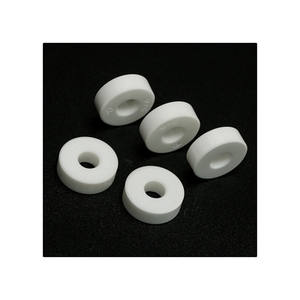Discover Premium Ceramic Products | Durability & Elegance United | Advanced Ceramics
PRODUCT PARAMETERS
Description
Introduction to Alumina Ceramics
Alumina ceramics are known for their high hardness, wear resistance, corrosion resistance, good electrical insulation and high temperature stability. According to the different alumina content, it can be divided into different grades, such as 95 porcelain, 99 porcelain, etc., among which 99 porcelain refers to ceramic materials with an alumina content of 99%. As the alumina content increases, its mechanical strength and electrical insulation properties will also increase accordingly.
Characteristics of Alumina Ceramics
High Hardness: Alumina ceramics have extremely high hardness, which makes it very wear-resistant and suitable for manufacturing abrasive tools and parts that require wear resistance.
Wear resistance: Due to its high hardness, alumina ceramics show excellent wear resistance and are suitable for manufacturing parts for long-term use.
Corrosion resistance: Alumina ceramics have good resistance to most acids and alkalis, making them widely used in the chemical industry.
Good electrical insulation: As an excellent electrical insulating material, alumina ceramics are widely used in electronic and electrical products.
High temperature stability: Ability to withstand extremely high temperatures without significant physical or chemical changes, which makes it an ideal choice for applications in high temperature environments.
Biocompatibility: In the medical field, certain grades of alumina ceramics are used to make medical devices such as artificial joints due to their good biocompatibility.
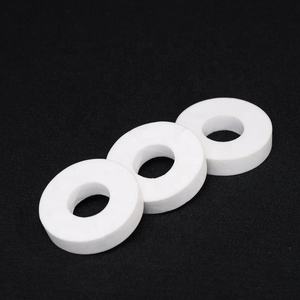
(High Frequency 99% Alumina Zirconia Ceramic Structural Part Ceramic Tube Rod Sleeve Balls Ceramic Insulator)
Specifications of High Frequency 99% Alumina Zirconia Ceramic Structural Part Ceramic Tube Rod Sleeve Balls Ceramic Insulator
This product is a high-performance structural part made from 99% alumina zirconia ceramic. It is designed for demanding industrial applications. The material combines alumina and zirconia for enhanced strength and durability. It works well in high-temperature environments. The maximum operating temperature is 1600°C. The ceramic resists thermal shock effectively. This prevents cracking under rapid temperature changes. The density is 3.9-4.1 g/cm³. The hardness reaches 15-17 GPa. This ensures resistance to wear and abrasion. The bending strength is 300-400 MPa. The compressive strength exceeds 2000 MPa. These properties make it suitable for heavy-load conditions.
The ceramic tube rod sleeve balls insulator offers excellent electrical insulation. The dielectric strength is 15-20 kV/mm. The volume resistivity is over 10^14 Ω·cm at 25°C. This prevents current leakage in high-voltage setups. The material is chemically inert. It resists corrosion from acids, alkalis, and molten metals. This extends service life in harsh chemical environments. The surface finish is smooth. Precision grinding ensures tight dimensional accuracy. Tolerances can be held within ±0.5% of specified measurements. Custom sizes and shapes are available. Common forms include tubes, rods, sleeves, balls, and insulators.
Applications include aerospace components, electronic substrates, and medical devices. It is used in furnace fixtures, semiconductor processing equipment, and cutting tools. The ceramic sleeve acts as a protective barrier in pumps and valves. The rod serves as a high-stress structural element. The balls are ideal for bearings in high-speed machinery. The insulator prevents electrical discharge in power systems. Customized parts meet specific mechanical or thermal requirements.
The manufacturing process uses advanced sintering techniques. This guarantees uniform microstructure and consistent performance. Each batch undergoes rigorous quality checks. Tests include density measurement, hardness verification, and strength validation. The product meets international standards for industrial ceramics. It is packaged securely to prevent damage during shipping. Technical support is available for material selection and design optimization. This ceramic solution improves efficiency in extreme operating conditions.
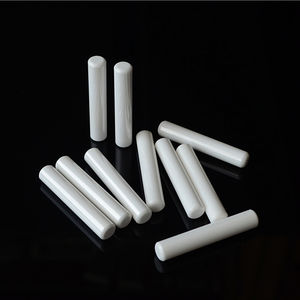
(High Frequency 99% Alumina Zirconia Ceramic Structural Part Ceramic Tube Rod Sleeve Balls Ceramic Insulator)
Applications of High Frequency 99% Alumina Zirconia Ceramic Structural Part Ceramic Tube Rod Sleeve Balls Ceramic Insulator
High-frequency 99% alumina zirconia ceramic structural parts are widely used in industries needing strong, heat-resistant materials. These parts include tubes, rods, sleeves, balls, and insulators. Their high hardness, thermal stability, and resistance to wear make them ideal for demanding applications.
In electronics, alumina zirconia ceramic tubes and insulators are common. They handle high-frequency signals in devices like radar systems and communication equipment. Their low electrical conductivity prevents signal loss. They also withstand high temperatures in vacuum environments, making them suitable for semiconductor manufacturing.
The automotive industry uses ceramic sleeves and rods in sensors and fuel injection systems. These parts endure extreme heat and corrosive chemicals. Their durability improves engine efficiency and reduces maintenance needs. Ceramic balls are used in bearings for high-speed machinery. They last longer than metal bearings under heavy loads and high temperatures.
Medical devices rely on alumina zirconia ceramic components for their biocompatibility. Surgical tools and implants use ceramic rods and sleeves. They resist corrosion from bodily fluids and sterilization processes. Their smooth surface reduces friction in moving parts, enhancing device reliability.
Industrial machinery benefits from ceramic structural parts in abrasive environments. Sleeves and tubes protect equipment from wear in mining and chemical processing. Their resistance to acids and alkalis ensures long-term performance. Ceramic insulators isolate electrical components in high-voltage systems, preventing short circuits.
The energy sector uses these ceramics in solar panels and nuclear reactors. Ceramic tubes transport hot gases and coolants. Their thermal stability maintains efficiency in power generation. Wind turbines use ceramic bearings to handle variable loads and harsh weather.
Alumina zirconia ceramic balls are also used in precision instruments. Their uniform size and hardness ensure accuracy in measuring devices. They reduce wear in grinding and mixing equipment, lowering downtime.
These ceramics combine strength, heat resistance, and chemical stability. Industries choose them to improve performance and reduce costs over time. Their versatility makes them essential in advanced engineering and technology.
Company Introduction
Advanced Ceramics founded on October 17, 2014, is a high-tech enterprise committed to the research and development, production, processing, sales and technical services of ceramic relative materials and products.. Since its establishment in 2014, the company has been committed to providing customers with the best products and services, and has become a leader in the industry through continuous technological innovation and strict quality management.
Our products includes but not limited to Silicon carbide ceramic products, Boron Carbide Ceramic Products, Boron Nitride Ceramic Products, Silicon Carbide Ceramic Products, Silicon Nitride Ceramic Products, Zirconium Dioxide Ceramic Products, Quartz Products, etc. Please feel free to contact us.(nanotrun@yahoo.com)

Payment Methods
T/T, Western Union, Paypal, Credit Card etc.
Shipment Methods
By air, by sea, by express, as customers request.

5 FAQs of High Frequency 99% Alumina Zirconia Ceramic Structural Part Ceramic Tube Rod Sleeve Balls Ceramic Insulator
High Frequency 99% Alumina Zirconia Ceramic Structural Parts are common in industries needing durable materials. These parts include tubes, rods, sleeves, balls, and insulators. They work in tough conditions like high heat, pressure, or chemical exposure. Their main uses cover electronics, machinery, medical devices, and industrial equipment.
People ask why 99% alumina is mixed with zirconia. The mix boosts strength and toughness. Pure alumina gives hardness. Zirconia stops cracks from spreading. This combo creates parts lasting longer under stress.
Many want to know how these parts handle high temperatures. The material resists extreme heat. It keeps its shape and strength even at high temperatures. This makes it ideal for furnaces, engines, or high-heat machinery.
People check if these ceramics resist wear and corrosion. The answer is yes. The hard surface avoids scratches and wear. It does not rust or react with most chemicals. This makes it suitable for harsh or wet environments.
Installation and maintenance are common concerns. Follow the manufacturer’s guidelines. Inspect parts for cracks before use. Clean them with a soft cloth and mild cleaner. Avoid hitting them with hard objects. Check them regularly for damage. Proper care extends their lifespan.
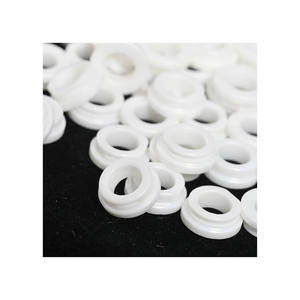
(High Frequency 99% Alumina Zirconia Ceramic Structural Part Ceramic Tube Rod Sleeve Balls Ceramic Insulator)
REQUEST A QUOTE
RELATED PRODUCTS
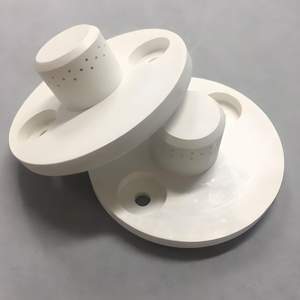
88% Alumina Aluminium Oxide Ceramic Filler Ball Catalyst Support 15mm 25mm 60mm 80mm Inert Alumina Ceramic Balls
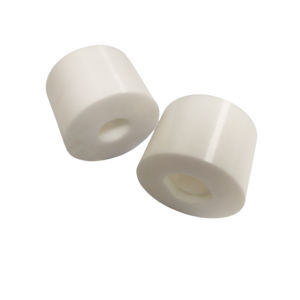
Alumina Grinding Ball High Density Alumina Ceramic Balls Alumina Ball
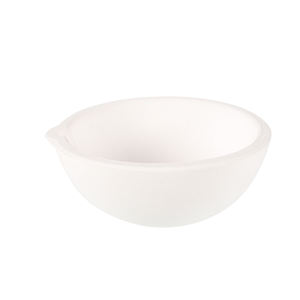
High Quality Porous Alumina Ceramic Foam Filter From Zhongci
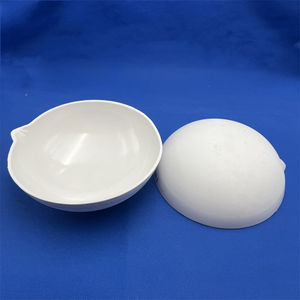
Manufactory Dry Casting Polished Surface Aluminum Oxide Alumina Ceramic Disc
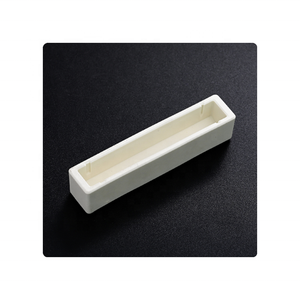
High Temperature Ceramic Plate 95% Round Alumina Ceramic Disc
